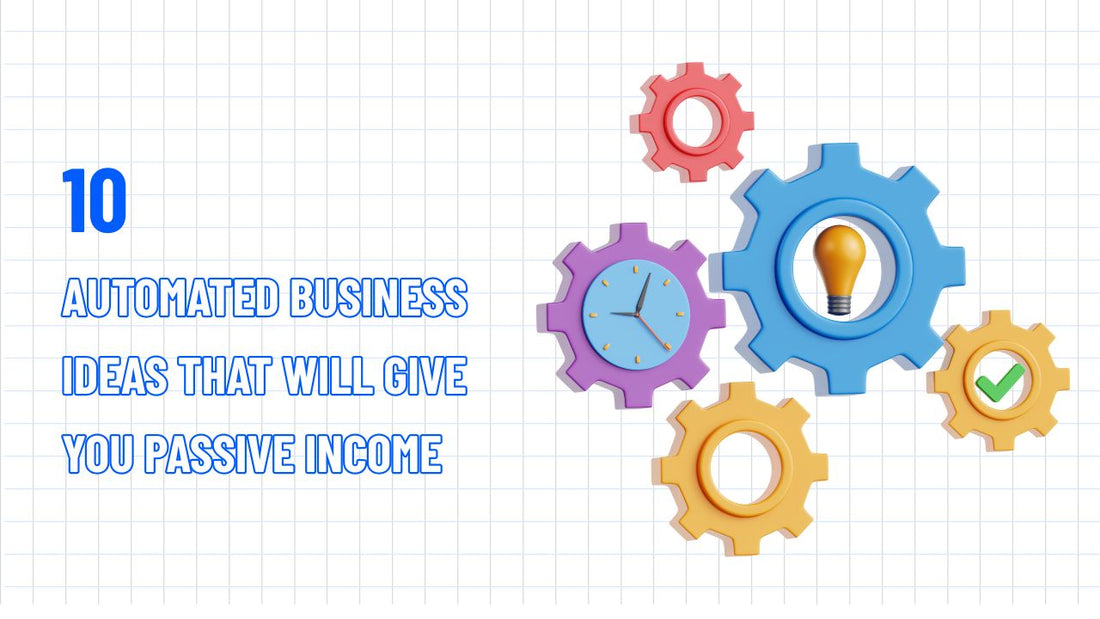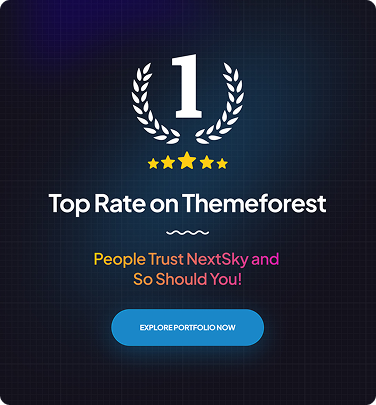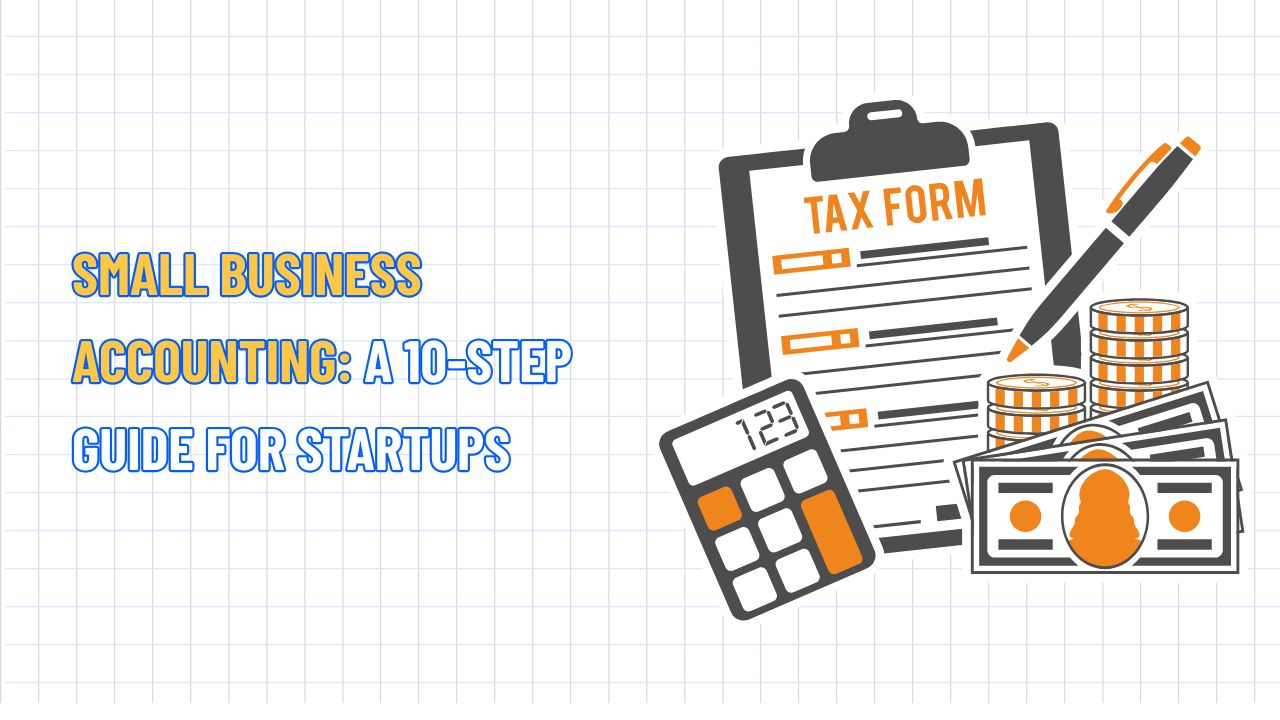10 Automated Business Ideas That Will Give You Passive Income
Table of Contents Hide
As the digital economy surges in 2025, automated business models are emerging as key drivers of success. In this guide, NextSky walks you through 10 top ideas and practical strategies to help elevate your business to the next level.
What is an automated business?
An automated business uses technology to streamline operations, minimize manual work, and boost efficiency. For small business owners, automation means saving time and focusing on growth rather than repetitive tasks. Common industries leveraging automation include:
- Accounting and finance.
- AI-driven workflows.
- Customer service.
- Recruitment and HR.
- Data entry.
- Marketing and sales.
- Order fulfillment.

See more: Top 26 Best Online Business Ideas Worth Trying Today
Why automation matters in 2025
Automation transforms ideas into self-operating systems saving time, reducing costs, and scaling faster.
- Increased efficiency. Routine tasks like data entry and appointment scheduling can be handled instantly, freeing you to focus on growth. According to McKinsey, AI now powers everyday tools from content creation to innovative product design.
- Cost savings. Automation helps cut staffing expenses and minimizes human error. Tools like automated invoicing streamline accounting and lower overhead.
- Scalability. Once set up, automated systems allow you to serve thousands of customers without hiring more staff. Digital products are a perfect example of creating once and selling infinitely.
- 24/7 operations. Automated tools let you sell and support customers around the clock.
- Focus on what matters. With repetitive work handled, you can prioritize product development, strategy, or customer experience, the actual growth levers.
Read more: Top 15 AI Business Ideas That Will 10x Your Income
Top 10 Automated Business Ideas for 2025
1. E-commerce dropshipping
Dropshipping lets you sell products online without handling inventory or shipping. Suppliers manage fulfillment so that you can focus on marketing and scaling. Ryan Hogue earns over $50,000/month by choosing the right niche and leveraging Shopify automation.

Market insights:
- Average annual revenue: $50,000–$500,000.
- Profit margin: 10%–30%.
- Startup costs: $200–$2,000.
- Time to revenue: 3–6 months.
- Annual market growth: 22%.
- Ideal for: E-commerce entrepreneurs, digital marketers, and niche enthusiasts.
How to start:
- Choose a high-demand, low-competition niche (e.g., eco-friendly products).
- Set up a Shopify store with a custom domain and branded theme.
- Integrate suppliers via DSers or Spocket.
- Automate marketing with Google Ads, Meta Ads, and Klaviyo.
- Use apps for abandoned cart recovery and AI-based customer support.
Read more: What is Dropshipping? Everything You Need to Know in 2025
2. Print-on-demand (POD)
Turn your designs into income without inventory or shipping. POD platforms like Printful or Printify handle fulfillment. Pair with Shopify or Etsy for full automation. Bella Canvas scaled to millions by focusing on the fitness niche through Printful.
Market insights:
- Average annual revenue: $30,000–$300,000.
- Profit margin: 15%–35%.
- Startup costs: $100–$1,000.
- Time to revenue: 2–5 months.
- Annual market growth: 26%.
- Ideal for: Graphic designers, artists, and content creators.
How to start:
- Choose a niche (e.g., pet lovers, gamers).
- Design using Canva or Adobe Express.
- Connect with a POD provider.
- Automate social posting via Buffer or Hootsuite.
- Run targeted ads on Instagram or Pinterest.
3. Affiliate marketing
Affiliate marketing lets you earn by promoting products without making or shipping them. Share links on blogs, videos, or social media while tools like Pretty Links and MailerLite handle tracking and automation. SEO expert Matt Diggity built a 7-figure empire this way.
Market insights:
- Average annual revenue: $20,000–$200,000.
- Profit margin: 20%–50%.
- Startup costs: $0–$500.
- Time to revenue: 3–12 months.
- Annual market growth: 10%.
- Ideal for: Bloggers, YouTubers, influencers.
How to start:
- Pick a niche (e.g., tech reviews, wellness tips).
- Create a blog or channel via WordPress or Wix.
- Join affiliate programs and embed links.
- Automate post scheduling with Later or WordPress plugins.
- Use Google Analytics to optimize performance.
Learn more: Selling Affiliate Products on Shopify: All You Need To Know
4. Online courses
Turn your expertise into passive income with an online course. Platforms like Shopify or Teachable automate enrollment, content delivery, and payment. Anke Herrmann earns over $200,000/year from her automated sewing course.

Market insights:
- Average annual revenue: $50,000–$500,000.
- Profit margin: 30%–70%.
- Startup costs: $300–$3,000.
- Time to revenue: 4–8 months.
- Annual market growth: 14%.
- Ideal for: Educators, professionals, and coaches.
How to start:
- Choose a high-demand topic.
- Record content using basic camera gear.
- Upload to Teachable or Thinkific.
- Promote via LinkedIn, YouTube, or Pinterest.
- Automate email engagement sequences.
5. Digital products
Sell digital products like templates, planners, or software via Gumroad or Etsy. It's a top passive income stream with near-zero overhead and infinite scalability. Chloe Forbes-Kindlen built a 6-figure income selling digital planners on Etsy.
Market insights:
- Average annual revenue: $20,000–$250,000.
- Profit margin: 40%–80%.
- Startup costs: $0–$500.
- Time to revenue: 2–6 months.
- Annual market growth: 12%.
- Ideal for: Designers, writers, developers.
How to start:
- Design using Canva or Google Docs.
- List on Etsy, Gumroad, or your site.
- Automate delivery via Payhip or SendOwl.
- Promote on Pinterest and Instagram.
6. Stock photography and video
If you love capturing photos or videos, sell them on Shutterstock or Adobe Stock and earn royalties per download. With AI now helping with tagging and editing, building your content library is easier than ever. Lisa Holloway earns a steady income from lifestyle shots.
Market insights:
- Average annual revenue: $30,000–$200,000.
- Profit margin: 20%–50%.
- Startup costs: $300–$2,000.
- Time to revenue: 3–9 months.
- Annual market growth: 8%.
- Ideal for: Photographers, videographers, creators.
How to start:
- Shoot niche content (e.g., remote workspaces).
- Edit with Lightroom or VSCO.
- Upload with optimized keywords.
- Use AI tools for batch processing.
Read more: TOP 500 Photography Business Name Ideas for Every Niche
7. Social media management
Managing social media for clients is a lucrative niche in the digital services industry. You can automate posting, performance tracking, and reporting with tools like Hootsuite and Sprout Social. Laura Roeder, founder of MeetEdgar, turned social scheduling into a million-dollar business, proving the power of streamlined automation.
Market insights:
- Average annual revenue: $40,000–$300,000.
- Profit margin: 15%–40%.
- Startup costs: $200–$1,000.
- Time to revenue: 3–6 months.
- Annual market growth: 10%.
- Ideal for: Social media experts, marketers, agencies.
How to start:
- Specialize in a platform (e.g., Instagram) or niche (e.g., restaurants).
- Use Canva for content creation and Hootsuite to schedule posts.
- Automate reporting with Google Data Studio.
- Find clients via Upwork or local business networks.
8. eBook publishing
Publishing eBooks allows writers to turn their passion into steady passive income. Platforms like Amazon KDP or Shopify automate sales, royalties, and distribution. Joanna Penn made over $1 million using clever marketing strategies and automation for her thriller novels.
Market insights:
- Average annual revenue: $20,000–$200,000.
- Profit margin: 30%–70%.
- Startup costs: $0–$500.
- Time to revenue: 2–6 months.
- Annual market growth: 9%.
- Ideal for: Authors, niche experts, indie publishers.
How to start:
- Research trending topics using Google Trends.
- Write in Scrivener or Google Docs.
- Publish through KDP or Apple Books.
- Automate promotion with BookBub or Amazon Ads.
Read more: How to Sell eBooks on Shopify: Simple Guide + Bonus Tips
9. Mobile app development
Building mobile apps can generate revenue from ads, in-app purchases, or subscriptions. With Firebase integration, you can automatically track user behavior and optimize the UX. Duolingo scaled to a $7B company by gamifying learning and automating onboarding.

Market insights:
- Average annual revenue: $50,000–$500,000.
- Profit margin: 20%–60%.
- Startup costs: $1,000–$10,000.
- Time to revenue: 6–12 months.
- Annual market growth: 11%.
- Ideal for: Developers, tech entrepreneurs, and no-code makers.
How to start:
- Identify a market gap (e.g., productivity tools).
- Build using Flutter or no-code platforms like Adalo.
- Launch on Google Play and the App Store.
- Monetize with RevenueCat and in-app automation.
10. Membership websites
A membership site lets you share exclusive content and build a loyal community. Tools like Kajabi automate payments, content access, and branding. Pat Flynn built Smart Passive Income into a $200K/year community by delivering automated, niche-tailored content.
Market insights:
- Average annual revenue: $30,000–$300,000.
- Profit margin: 25%–60%.
- Startup costs: $200–$2,000.
- Time to revenue: 3–8 months.
- Annual market growth: 13%.
- Ideal for: Creators, coaches, community builders.
How to start:
- Choose a niche (e.g., fitness coaching).
- Set up your site with MemberPress or Patreon.
- Automate content delivery and payments.
- Promote via YouTube or Instagram with scheduled posts.
How can I automate my business?
Starting a business with automation at its core saves time and helps you scale more effectively. Below are eight essential steps to help you build an automated business from the ground up.

Clarify your goals
Before jumping into automation, ask yourself: What do I want to achieve with automation? Effective systems are always built around clear goals—not just because automation is trendy. Some common goals include:
- Creating passive income streams without 24/7 oversight.
- Reducing operating costs, especially staffing expenses.
- Speeding up order processing, marketing, and customer support.
- Optimizing profits from your current business model.
Automation is not the destination—it's the vehicle. You'll only move faster and further if you know where you're headed.
Identify tasks worth automating
Not everything needs—or should—be automated. The key is identifying repetitive tasks that drain time without delivering proportional value. Prioritize:
- Repetitive actions like data entry, email sending, and appointment scheduling.
- Functions that are time-consuming but don't directly generate profit.
- Processes prone to human error.
- Workflows that slow down critical operations.
These "silent bottlenecks" are ideal starting points for automation.
Start smart with 5 core tools
You don't need dozens of apps to automate your business. Start lean with five core tools that can save hours of work each day:
- CRM (Customer Relationship Management): Track all interactions before and after the sale (e.g., HubSpot, Zoho).
- Email automation: Send the right emails at the right time based on behavior (e.g., Mailchimp, ActiveCampaign).
- Integration & workflow automation: Connect tools without writing code (e.g., Zapier, Make).
- Smart accounting: Automate bookkeeping, invoices, and tax tracking (e.g., QuickBooks, Xero).
- Sales website with tracking: Easy-to-use platforms with built-in tracking and conversion tools (e.g., Shopify, WordPress with Pixel).
Don't try to do everything, start with the right things. A few well-chosen tools are all you need to automate like a pro.
Set boundaries for your automation workflows
A common mistake is trying to "automate everything," leading to bloated systems, higher costs, and chaos. Instead, be strategic:
- Execution frequency: Should this run hourly, daily, or only when triggered by a specific action? Automation should lighten your load, not add to it.
- Step limits: How many steps should one automation handle? Can you batch them to save on resources?
- Data priorities: Not all data needs to be stored forever. Keep only what brings actual value to avoid unnecessary costs.
Example: Running a workflow every minute instead of every hour uses 60x more resources without necessarily improving outcomes. Optimization is not about more—it's about more thoughtful execution.
Define roles clearly
No matter how powerful automation becomes, people are irreplaceable. You need a team to set up systems, handle exceptions, and revise workflows as your products, customers, or market evolve. So make sure to:
- Build clear Standard Operating Procedures (SOPs).
- Assign ownership of each part of the process.
- Train your staff to understand and manage automation, not rely entirely on third parties.
Intelligent automation isn't about replacing humans but empowering them to focus on high-value work.
Monitor and optimize performance
Without tracking, improvement is just guesswork. Monitoring tools give you complete visibility into the customer journey:
- Pixels and tags: Track every visitor behavior on your site.
- CRM and email analytics: Understand open rates, click-throughs, and conversions to see what messaging works.
- Google Analytics: Evaluate landing page performance, bounce rates, and traffic sources.
Regular reviews show what's working and spotlight bottlenecks holding back growth.
Continuously refine your system
Automation isn't a one-time fix. It's an ongoing testing and improvement process. Your system stays alive only if you keep asking:
- Are customer behaviors shifting?
- Are we launching new products or pricing strategies?
- Has the tool we used yesterday been outclassed by something better today?
Resilient businesses don't wait for problems to appear—they tweak proactively to stay ahead.
Build a culture of automation across your team
An efficient system starts with the right mindset. It's not just the founder's job. The team should be encouraged to ask daily: "Is there a faster, smarter way to do this?"
- Cut out redundant steps and clunky workflows.
- Use tools to replace boring, repetitive tasks.
- Empower everyone to suggest improvements—not just follow instructions.
As Paul Akers, author of 2 Second Lean, once said: " Improvement doesn't have to be massive. If each person improves just 1% a day, your organization will transform in ways you can't imagine". That's the kind of culture that turns small startups into well-oiled machines.
We hope these automation tips from NextSky help you build a sustainable, profitable business that delivers standout value to your customers. Check out our Shopify guides to confidently launch your dropshipping store, membership site, or digital product empire.










